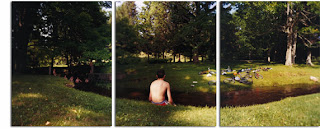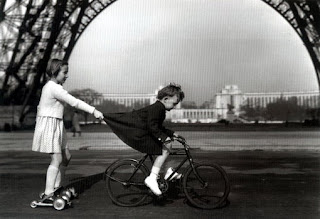_ What are some ways to indicate a new paragraph.
Usually a new paragraph is shown when you indent the first line. However, there are other ways to show it too. For example, double spacing, text size, leading, and icons could symbolize a new paragraph.
_ What are some things to look out for when hyphenating text.
Try to leave at least 2 characters on the line and 3 following, avoid hyphenating proper nouns.
_ Define font hinting. Why is necessary?
Font hinting is the use of mathematical instructions to adjust the display of an outline font so that it lines up with a rasterized grid. At low screen resolutions, hinting is critical for producing a clear, legible text.
_ What is letterspacing/tracking? How do you track in Illustrator or InDesign
Letterspacing is the amount of white space between the letters in a word, which is crucial for reading clarity. The following picture shows where you go to change letterspacing in indesign:
_ Define Kerning? Name 8 kerning pairs. How do you kern in InDesign or Illustrator?
Kerning is the process of adjusting the spacing between characters in a proportional font, usually to achieve a visually pleasing result.Some common kerning pairs include Tu, Te, Ty, Wa, Av, Aw, Ta, AC. To apply any amount of kerning in indesign you would go to the following section on the text toolbar:
_ try the kerning game (link). how did you do?
_ What is wordspacing?
Wordspacing is simply just the amount of white space between words.
_ Explain DIN.
DIN is an acronym for the German Deutsches Institut für Normung (German Institute for Standardization) and the name of an increasingly large realist sans-serif typeface family. In 1936 the German Standard Committee selected DIN 1451 as the standard typeface for use in the areas of engineering, technology, traffic, administration and business. Among the other recommendations adopted by this committee was an early precursor to the typographic grid.
_ What is a baseline grid?
The main principle of the baseline grid is that the bottom of every line of text (the baseline) falls on a vertical grid set in even increments all the way down the page.
_ How many characters per line is optimal? Is there a range?
The optimal characters per line is 40-80.
_ Define aesthetic text alignment (optically hanging punctuation).
Punctuation marks extending beyond the text frame
_ What is a typographic river?
_ What is a typographic river?
A typographic river consists of gaps appearing to run down a paragraph of text, due to a coincidental alignment of spaces. They can occur regardless of the spacing settings, but are most noticeable with wide inter-word spaces caused by full text justification or monospaced fonts.
_ What is a widow?
A widow is a paragraph-ending line that falls at the beginning of the following page/column, thus separated from the rest of the text.
_ what is an orphan?
An orphan is a word, part of a word, or very short line that appears by itself at the end of a paragraph. Orphans result in too much white space between paragraphs or at the bottom of a page.



























